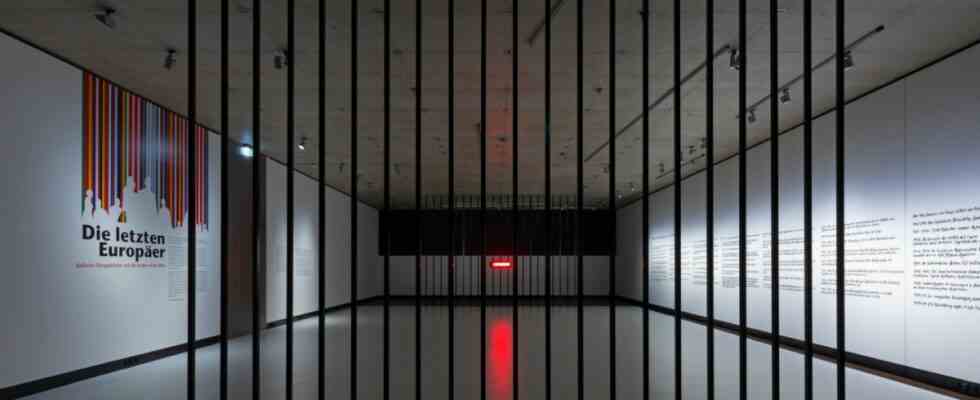There’s this monstrous number: 123423801. It’s glowing in red digits on a digital scoreboard. Since the opening of the exhibition “The Last Europeans” in the Jewish Museum, it has counted backwards. The installation is like a warning prologue for this show. The 123 million are the deaths caused by European wars and acts of violence in the 20th century. A figure that is arguably not even complete, although it includes victims of atrocities committed by European powers outside the continent.
At least since the Ukraine war, belief in the European peace project has been suffering
Exposed at the beginning, the installation is intended to bring to mind the original idea of the European project as a peace-building endeavor – before it was about creating a common economic area. Faith in the European peace order has been shaken since the Ukraine war. The EU economic area has not only experienced a crisis since Brexit. Despite disappointed hopes in the peace and economic project, it becomes clear that the curatorial team believes in Europe. Felicitas Heimann-Jelinek, Michaela Feuerstein-Prasser and project manager Hanno Loewy put the focus of the exhibition, which was created in cooperation with the Hohenems Jewish Museum, on Jewish contributions that promoted the development of the EU and ultimately gave it its current appearance. Many people are not even aware that there are so many of them, says Heimann-Jelinek.
This monstrous number documents the millions of deaths caused by European wars and acts of violence in the 20th century.
(Photo: Eva Jiinger/Jewish Museum Munich)
The exhibition illuminates these contributions by Jewish personalities to the European project with text panels and videos. There is, for example, Walther Rathenau and his writings on the European customs union. Or Walter Benjamin’s thoughts from 1940, which give the show its title: “One wonders whether history is not in the process of forging an ingenious synthesis of two Nietzschean concepts, namely that of the good European and that of the last human being . That could make the last European. We’re all fighting not to become one.”
Each text panel is accompanied by a thematically linked video interview conducted by Heimann-Jelinek, Feuerstein-Prasser and Loewy, for example with the politician Daniel Cohn-Bendit on the question of a social union in Europe. The focus is largely on the 20th century, but in some places more recent developments such as those in Greece or the Corona crisis are discussed. The ambition of the exhibition to cover “sixteen key issues of the EU” is sometimes overwhelming. In addition, not all of them relate to the European project in the narrower sense, but are urgent global issues, as in the case of the environmental and feminist movements.
The accompanying collection of texts provides in-depth insights into the curators’ research. At the same time, the show conveys her hope that Europe can survive the growing national movements, the economic crises and the current war.
“The Last Europeans”, through May 21, Jüdisches Museum Munich, Sankt-Jakobs-Platz 16.

